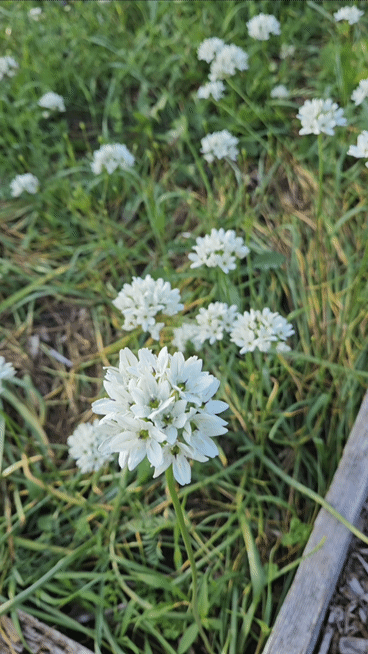Triteleia hyacynthina
Triteleia hyacynthina
Couldn't load pickup availability
White Triteleia is similar to the other two Triteleias we grow, in that it forms large colonies of small bulbs (corms, technically) that are both easy to grow, beautiful when in bloom, and a great source of food. One of its supposed common names is fool’s onion, because of the resemblance of the flower to several allium species. But it has none of the taste of smell of alliums. This one may in fact be the easiest of its family to use as food. The small bulbs (2 to 3 cm across) are plentiful, the thin skin comes off by just rinsing it, and it has a pleasant, neutral flavor, somewhat similar to a new potato. Simply boiling them for 10 minutes or so is enough.
Cultivation: Similar to other Triteleias and Dichelostemmas this one is easy to please in the right conditions: sandy or heavier soil, lots of organic matter, full sun, kept moist in the spring and early summer, then dry when it goes dormant. It also produces abundant seeds, which will help the adventurous gardener select different varieties. Ours were grown from a combination of seeds collected in various locations in the Canadian and US west. We’ve cultivated them for several years of trial and error, and the ones we have now are hardy to zone 4, perhaps lower (we have ghastly winters!). Be sure to plant deep enough (10 cm seems to work) to prevent voles and other rodents from raiding your beds. But once established, they seem impervious to both climate and critters.
Food preparation: One of the easiest to harvest, prepare, and cook of the plants we carry, even easier than its close cousins. The bulbs come out of the ground mostly clean, and only need to be lightly scrubbed under cold water to remove the thin tunic (the paper-like covering of a bulb or corm) to expose an almost pure white bulb (see below). They can then be cooked like potatoes or any similar root vegetable and have a neutral, pleasant taste. They’re cooked in about 10 minutes and are a great addition to a stew for instance.
Ethnobotany: Plants of this family were broadly used as food by indigenous people of Western North America, such as the Pomo and Kashaya (Moerman, 2012:569). It was usually roasted in hot ashes or boiled. The beautiful flowers were also used for ceremonial purposes.
Share


